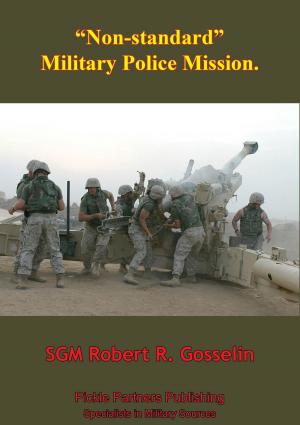The Iranian Hostage Rescue Attempt: A Case Study
Nonfiction, History, Middle East, Persian Gulf War, Military| Author: | Major Peter D. Buck USMC | ISBN: | 9781782899686 |
| Publisher: | Tannenberg Publishing | Publication: | November 6, 2015 |
| Imprint: | Tannenberg Publishing | Language: | English |
| Author: | Major Peter D. Buck USMC |
| ISBN: | 9781782899686 |
| Publisher: | Tannenberg Publishing |
| Publication: | November 6, 2015 |
| Imprint: | Tannenberg Publishing |
| Language: | English |
Operation Eagle Claw was tactically feasible, operationally vacant, and strategically risky.
This paper examines the failed hostage rescue mission conducted by the U.S. in Iran during April of 1980. The following text will recreate the rescue mission in its historical context while identifying factors across the three levels of war which contributed to its outcome. The three levels of war referred to in this discussion are the tactical, operational and strategic levels.
This study concludes that (1) The fall of the Shah unearthed a gap in U.S. military influence in the Middle East which could not rapidly be overcome; (2) the hostage rescue mission, although tied directly to the strategic objective of returning the 53 American hostages, provided little influence in terms of salvaging U.S. honor and interests in the Middle East. In reality, it is probable that mission failure protracted eventual diplomatic resolution of the crisis; (3) the hostage rescue mission, a limited objective and high risk raid, should only have been executed in the event that hostages lives were directly threatened; and (4) since 1961, sixty-six separate hostage, kidnapping, or hijacking incidents have occurred involving U.S. diplomats, servicemen, and private citizens. The frequency of these actions equate to 1.6 per year over the past 41 years. This data demonstrates the relevancy of the subject and the frequency of its occurrence.
Operation Eagle Claw was tactically feasible, operationally vacant, and strategically risky.
This paper examines the failed hostage rescue mission conducted by the U.S. in Iran during April of 1980. The following text will recreate the rescue mission in its historical context while identifying factors across the three levels of war which contributed to its outcome. The three levels of war referred to in this discussion are the tactical, operational and strategic levels.
This study concludes that (1) The fall of the Shah unearthed a gap in U.S. military influence in the Middle East which could not rapidly be overcome; (2) the hostage rescue mission, although tied directly to the strategic objective of returning the 53 American hostages, provided little influence in terms of salvaging U.S. honor and interests in the Middle East. In reality, it is probable that mission failure protracted eventual diplomatic resolution of the crisis; (3) the hostage rescue mission, a limited objective and high risk raid, should only have been executed in the event that hostages lives were directly threatened; and (4) since 1961, sixty-six separate hostage, kidnapping, or hijacking incidents have occurred involving U.S. diplomats, servicemen, and private citizens. The frequency of these actions equate to 1.6 per year over the past 41 years. This data demonstrates the relevancy of the subject and the frequency of its occurrence.








![Cover of the book Strategy For Defeat: The Luftwaffe, 1933-1945 [Illustrated Edition] by Major Peter D. Buck USMC](https://www.kuoky.com/images/2015/november/300x300/9781786257703-egzS_300x.jpg)
![Cover of the book Breaking The Mold: Tanks In The Cities [Illustrated Edition] by Major Peter D. Buck USMC](https://www.kuoky.com/images/2014/august/300x300/9781782894445-WpCv_300x.jpg)




![Cover of the book U.S. Marines In Battle: Al-Qaim, September 2005-March 2006 [Illustrated Edition] by Major Peter D. Buck USMC](https://www.kuoky.com/images/2014/august/300x300/9781782896838-V3md_300x.jpg)
